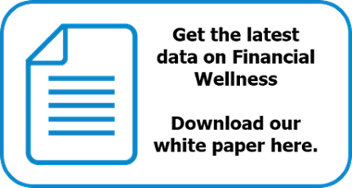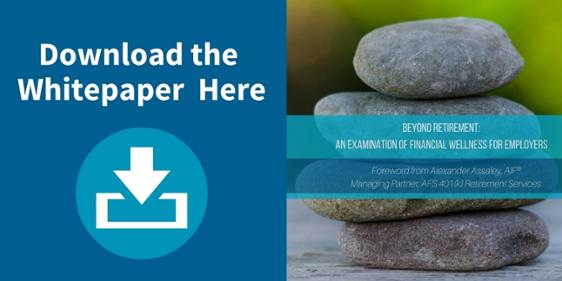Employer retirement plans of all kinds, including 401(k)s, have increasingly become seen as the holy grail in the world of retirement benefits. If employers offer a retirement plan (especially if there's a match), then employees will save, and they will be able to happily retire when they want...or at least that's the intent. Overall, while there are many reasons that Americans struggle with saving enough for retirement, even if they have access to a plan through work, there is another benefit that can provide an extra boost from employers: Health Savings Accounts.
Typically thought of as a healthcare benefit separate from retirement, HSAs offer much more than meets the eye. Furthermore, even with healthcare reform on the horizon, we

here we will likely see changes, it's safe to say that no matter what the outcome is, HSA's will continue to grow in use and popularity.
Let's discuss how Health Savings Accounts can help your employees now and the future vision for this employee benefit.
The Basics
A Health Savings Account (or HSA) refers to an account specifically designed to save for out-of-pocket medical expenses. Currently, only those enrolled in a high-deductible health insurance plan (HDHP) are eligible to take advantage of an HSA. In 2017, the IRS defines HDHPs based on their out-of-pocket deductibles:
2017 HDHP Out-of-Pocket Minimums & Maximum Requirements
|
INDIVIDUALS |
|
Minimum Deductible - $1,300 |
|
Out-of-pocket maximum = $6,550 |
|
FAMILIES |
|
Minimum Deductible - $2,600 |
|
Out-of-pocket maximum = $13,100 |
Every year, employees decide how much they would like to contribute to their HSA. Many organizations also offer HSA contributions or a match to employees, much like a 401(k). The IRS-mandated contribution maximum in 2017 for an individual is $3,400 and for a family, it's $6,750.
2017 Maximum HSA Contribution Limits
|
INDIVIDUALS |
|
Maximum Contribution = $3,400 |
|
FAMILIES |
|
Maximum Contribution = $6,750 |
Similar to catch-up contributions for retirement plans, those aged 55 and over have the opportunity to contribute up to $1,000 more to their HSAs.
Once employees are enrolled and have contributed to an HSA, they will receive a debit card or checks to distribute funds. HSA funds can only be used for eligible medical expenses such as deductibles, copays and coinsurance, and other qualified medical expenses. Premium payments are typically not applicable to HSA funds.
How Will This Help With Retirement?
Unlike the very similar Flexible Spending Account option sometimes offered, employees can 1) take their HSA with them should they change jobs; and 2) unused funds continue to roll over year after year and stay in the employee's account.
The biggest benefit though is that HSAs boast triple tax advantages: Contributions are made pre-tax/tax-deductible, the money grows tax-free, and, when used for eligible medical expenses, it gets withdrawn tax-free. This means that making and withdrawing contributions lowers someone's tax burden overall. Not only is this a great benefit while an employee is still working, but since they can carry their HSA throughout their career into retirement, it's another way to create a tax-diversified retirement strategy.
Compounding these benefits are the investment opportunities that can go along with HSAs. Much like a 401(k) or other retirement plan, HSA funds can be invested in mutual funds, stocks and other investment vehicles.
Plus, that's not all. Unlike a 401(k), there are no minimum required distributions you must take at age 70 1/2.
With all of those benefits, it's no wonder that HSAs have been called "the most tax-beneficial account on the planet."
What's To Come?
HSAs are an all all-around great tool to supplement employees' existing benefits packages. While there are many things about healthcare reform that are up in the air right now, HSAs are most likely not one of them. The current administration has been touting the benefits of expanding HSA access since January, but HSAs have experienced a significant rise in popularity much before that. Over the last decade, HSA participation has grown from just 3.2 million in 2006 to 20.2 million in 2016.
With that, high deductible health plans are already being adopted more and more within organizations. Much like the adoption of defined contribution plans for retirement planning years ago, the onus to cover medical costs out-of-pocket is increasingly being put on the employee, at least for initial costs.
HSAs allow employees to have money set aside for any initial costs in the interim before reaching their deductibles and, if they continue to save into their HSA, that money will grow and be able to help them with the skyrocketing costs for healthcare in retirement. According to Fidelity Investments, a 65-year old couple retiring in 2016 will need an estimated $260,000 to cover health care in retirement. That number is only projected to climb as time goes on.
HDHPs are partly becoming more popular due to their promotion of smarter consumer behavior and also to avoid the Cadillac tax, which is supposed to be effective 2020 if it doesn't end up getting repealed by the current administration. Even if the tax is repealed, companies want to lower health care plan costs overall and HDHPs serve that purpose.
While it's easy to focus on the health-related impacts of HSAs, it's important to realize the full triple-tax benefits and retirement savings component of an HSA and also communicate this to employees if your organization offers this option. While the responsibility to save in general may be on the employee, HR and Benefits professionals can still support and empower workers with the right tools so they can make choices that will help them today and in the future.

